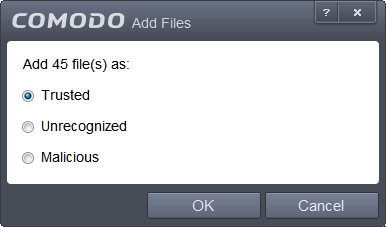D
Deleted member 2913
Thread author
Since version 8 CIS introduced new autosandbox default rules i.e "Internet" that replaced "Any". Now I dont know how the "Internet" rules decides to autosandbox the programs, on what basis...what criteria...are considered by the "Internet" rules to decide to autosandbox the programs or not...but I must say "Internet" rules seems a vast improvement & have definitely made CIS a lot better & usable especially for average users.
Nowadays I am trying latest CIS with default settings. For usability check, I installed/updated/upgraded, etc... quite many programs i.e average users programs/popular programs/required programs & some not so popular programs, etc...& not a single program was autosandboxed or generated alerts. Thats a huge plus & improvements.
But I am confused a little. Programs installed were not autosandboxed but some programs entries are there in Unrecognized Lists -Can anyone explain this? Programs are working fine & definitely not running sandboxed thats good.
Is this expected behavior & something new as per new autosandbox default rules "Internet" & other policies, criteria, etc...?
Nowadays I am trying latest CIS with default settings. For usability check, I installed/updated/upgraded, etc... quite many programs i.e average users programs/popular programs/required programs & some not so popular programs, etc...& not a single program was autosandboxed or generated alerts. Thats a huge plus & improvements.
But I am confused a little. Programs installed were not autosandboxed but some programs entries are there in Unrecognized Lists -Can anyone explain this? Programs are working fine & definitely not running sandboxed thats good.
Is this expected behavior & something new as per new autosandbox default rules "Internet" & other policies, criteria, etc...?

